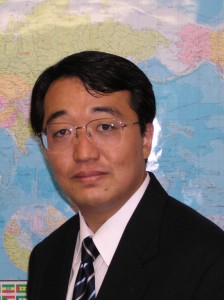緊張と統合:内村鑑三におけるキリスト教と日本の精神
このシリーズでは、私が1994年に執筆した統一神学大学院(Unification Theological Seminary)の神学課程修士論文(Divinity Thesis)を日英二か国語で掲載している。
7.無教会運動の評価の続き
「他律」という言葉も、二つのギリシア語から由来する。「見知らぬ(strange)」や「外の(foreign)」を意味する heteros と、「法」を意味する nomos である。他律は人がいかに実在を理解すべきであるかを「外部から」命令し、見知らぬ法を強制する。たとえばもし誰かが「あなたは許しを受ける前に、まずこの教義に対する信仰をもたなくてはならない。」というならば、それは人に信じ難いことを信じるように強い、率直な疑問を抑圧することによって、その人の正直さを破壊する結果となるのである。ティリッヒは、他律とは「われわれに安全を保証する権威に服従することによって、恐怖を逃れようとする試みである」と結論づける。この意味において、全ての宗教的権威は他律的になりうると彼は指摘するのである:
あるべき教会においては、何ものも自律と対立して他律的ではない。また人間の精神生活においては、それが究極的な統合性を有する場合は、何ものも他律と対立して自律的ではない。しかしこれは人間の状況にあてはまらない。教会は単に新存在の共同体であるのみならず、それはまた実存の葛藤の中に巻きこまれた社会集団でもある。それゆえ教会は、他律的となって自律的批判を弾圧するというほとんど不可避的な誘惑にさらされ、そして教会はまさにこの方法によって文化のみならず教会自体をも世俗化するほどの強い自律性の反撥を誘い出す。
ティリッヒは、教会は異端との戦いで多大なる犠牲を払ったと指摘する。後に異端尋問の教会と化した、彼が権威主義的教会の他律的構造と呼ぶものは、正統主義の反グノーシス反応にその起源がある。さらに、あらゆる定義は排除を伴う。教会は異端の脅威から自分の身を守る必要に迫られたとき、自分自身を定義することを余儀なくされた。ティリッヒの信じるところによれば、この自己定義は不可避的に教会を狭める結果となったのである。
キリスト教の教義の全歴史は、限定の連続であるが、それはまた同時に『定義』でもある。そして定義は重要である。なぜならそれがなければ多くの要素が教会の土台を削り落とし、その存在さえ否定したであろう。したがって教義、教義の発達はただ単に嘆かわしいもの、あるいは悪しきものではない。そらは教会がそのアイデンティティーそのものを保つための必然的な形であった。・・・全歴史の悲劇的な要素は、このようなことがなされなければならなくなると、それはただちに自らを限定し、非常に価値ある要素を排斥する結果をもたらすということである。(魚谷訳)
ティリッヒはこの自己定義による自己縮小の問題は、継続的な教会の改革以外に解決の道はないと信ずる。
ティリッヒによれば、自律と他律との戦いは、実存の諸制約下における理性の構造的要素の自己崩壊的葛藤である。それは同じ理性の異なった形態同士の葛藤であるがゆえに、この分裂は最終的には癒される。
VII. Evaluation of the Mukyokai Movement.(Cont.)
The word “heteronomy” also derives from two Greek terms, heteros, which means “strange” or “foreign,” and nomos, which means “law.”(22) Heteronomy impose upon a man the way to understand reality from “outside” and forces a strange law upon him.(23) For example, if somebody should say, “Before you can be forgiven you must first have belief in this doctrine,” it results in destroying a person’s honesty by compelling that person to believe certain unbelievable things, and repressing honest doubt. He concludes that heteronomy is “the attempt to escape fear, not by courage but by subjection to an authority which gives us security.” (24) In this sense, Tillich points out, all religious authority can become heteronomous:
In the church as it should be, nothing is heteronomous in contrast to autonomous. And in man’s spiritual life nothing is autonomous, in contrast to heteronomous, whenever spiritual life has an ultimate integration. Yet this is not the human situation. The church is not only the community of the New Being; it is also a sociological group immersed in the conflicts of existence. Therefore, it is subject to the almost irresistible temptation of becoming heteronomous and of suppressing autonomous criticism, eliciting just by this method autonomous reactions which often are strong enough to secularize not only culture but also the church itself. A heteronomous tide may then start the vicious circle again.(25)
Tillich points out that the church paid a dear price in its struggle against heresies. What he called the heteronomous structures of an authoritarian church, which later resulted in the church of the Inquisition, had their beginnings in the anti-Gnostic response of Orthodoxy. Also every definition entails exclusion. When the church was pressed by heresies to defend itself, it had to define itself. This self-definition, Tillich believes, inevitably has a narrowing result.
The whole history of Christian dogma is a continuing narrowing down, but at the same time a defining. And the definition is important, because without it many elements would have undercut the whole church, would have denied its existence. The dogma, therefore, the dogmatic development, is not something merely lamentable or evil. It was the necessary form by which the church kept its very identity…. The tragic element in all history is that if something like this must be done, it immediately has the consequence of narrowing down and excluding very valuable elements.” (26)
Tillich believes that there is no solution to this problem of self-reduction through self-definition except by the continual reformation of the church.
According to Tillich, the battle between autonomy and heteronomy is a self-destructive conflict between the structural elements of reason under the conditions of existence.(27) Since it is a conflict between different forms of the same reason, the schism can be ultimately healed.
(22)Ibid. , p.26.
(23)op cit, Tillich, Systematic Theology, Vol. I, p.84.
(24)op cit, Tillich, Perspectives, p.26
(25)op cit, Tillich, Systematic Theology, Vol. I, p.148.
(26)Tillich, Ultimate Concern: Tillich in Dialogue, ed. Mackenzie Brown (New York: Haper & Row, Publishers, 1965). pp.64-5.
(27)op cit, Tillich, Systematic Theology, Vol. I, p.83.
